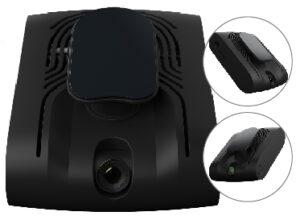
AI-enabled camera design for the vehicular environment
About the Client
A startup that produces IoT solutions for the automotive industry.
Customer
Confidential
Location
France
Industry
Automotive
Company’s Request
The client required an AI-enabled camera enclosure designed for the vehicular environment (e.g. a smart dash camera).
Technology Set
Sketching | Used during the initial design phase, sketching allowed our team to rapidly conceptualize the modular camera system, facilitating early discussions and iterations on form and function. |
Rhino | Employed for its powerful 3D modeling capabilities, Rhino helped in crafting detailed and precise geometric designs of the camera, optimizing the layout for modularity and performance. |
KeyShot | Utilized for high-quality visualization, KeyShot allowed the team to create realistic renders of the prototype, which were instrumental in evaluating aesthetic and functional aspects before physical prototyping. |
SolidWorks | Played a crucial role in the final stages of design and engineering, enabling precise CAD modeling and simulations to ensure the camera's durability and functionality, especially in dynamic automotive environments. |
Our team created a prototype modular build camera, optimized for the detection of objects inside and outside moving vehicles (cars, trucks, trains). Due to its modularity and powerful processing capabilities, it can detect a variety of different objects and behaviors in different scenarios, for example:
- drowsiness or distraction of drivers
- obstructions such as people, snow piles, or guard rails
- tailgating
- Through the use of a built-in accelerometer and GNSS for geofencing, it can identify
- aggressiveness, speeding, and road anomalies

Scope of our work included:
- Industrial design
- Mechanical engineering
- Firmware engineering consulting
The final design was prepared for immediate printing for future testing, and for the launch of products in serial production.
Value Delivered

Universal Design
The dashcam’s body, mount, and ventilation were designed to be universal and could be implemented in any kind of vehicle.
Production Readiness
The final design was prepared for immediate printing for future testing and for the launch of products in serial production.